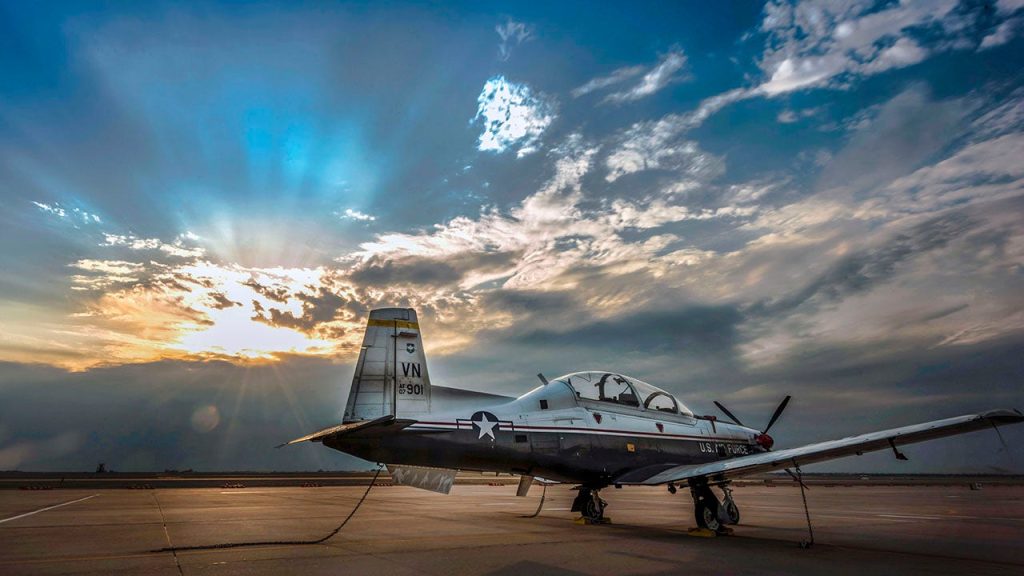An Air Force instructor pilot was tragically killed when the ejection seat of the T-6A Texan II aircraft he was in activated while the plane was still on the ground at Sheppard Air Force Base in Texas. The pilot’s identity was not released until his next of kin were notified. Ejection seats, while designed to save pilots’ lives in critical situations, can also fail, as in the case of 1st Lt. David Schmitz who died in an F-16 crash in 2020 due to ejection seat failure.
The incident at Sheppard Air Force Base is a heartbreaking reminder of the risks that come with training to become a military pilot. Ejection seats have been credited with saving lives in numerous instances, but there have also been cases where they have malfunctioned, emphasizing the importance of thorough safety checks and maintenance procedures. In a heroic act of teamwork, a B-1 bomber crew in 2018 decided to stay in their burning aircraft despite one of the ejection seats indicating failure, allowing for a successful emergency landing and the survival of all crew members.
The Air Force community is mourning the loss of the instructor pilot and offering support to his loved ones during this difficult time. The safety and well-being of military personnel is a top priority, and incidents like this serve as a reminder of the risks involved in training and flying military aircraft. Investigations into the incident will likely focus on determining the cause of the ejection seat activation and identifying any factors that may have contributed to the tragic event.
The tragedy at Sheppard Air Force Base highlights the inherent dangers that come with military aviation, where pilots and aircrew face risks every time they take to the skies. Despite the rigorous training and safety protocols in place, accidents can still occur, leading to the loss of lives and devastating impact on families and colleagues. The Air Force is committed to learning from such incidents and implementing measures to prevent similar accidents in the future.
The ejection seat malfunction that led to the death of the instructor pilot serves as a stark reminder of the complex and sometimes unpredictable nature of military aviation. While ejection seats are designed to provide a last-resort means of escape for pilots in distress, their failure can have catastrophic consequences, as seen in this tragic incident. The Air Force will likely conduct a thorough investigation to determine the cause of the malfunction and take appropriate measures to prevent similar accidents from occurring in the future.
As the Air Force community mourns the loss of the instructor pilot, they will come together to honor his memory and support his family and friends through this difficult time. The risks and challenges of military aviation are an inherent part of the profession, but incidents like this serve as a solemn reminder of the sacrifices made by those who serve in the armed forces. The Air Force will continue to prioritize safety and training to ensure that its personnel are prepared to face the challenges of flying military aircraft while minimizing the risks to their lives.


